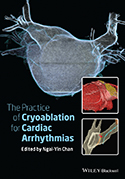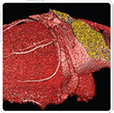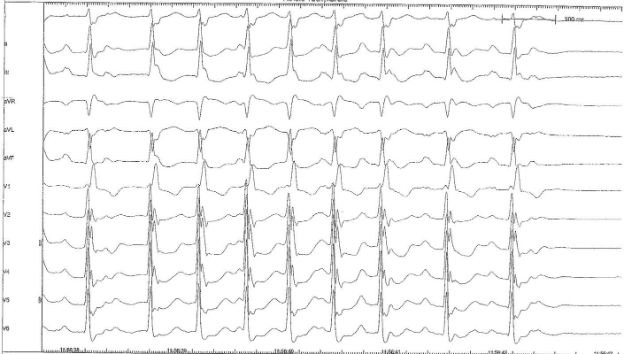A 78-year-old man presented with a several year history of irregular rhythms which were incessant and unresponsive to beta blockers, calcium channel antagonists, and Class Ic antiarrhythmic agents. Documented arrhythmias included atrial runs, fast regular and irregular supraventricular tachycardias, and atrial fibrillation.
The patient complained of shortness of breath, lightheadedness, and syncopy. Coronary artery disease was ruled out by coronary angiography.
The resting ECG showed atrial runs and irregularly conducted atrial tachycardias (Fig. 1). Further analysis revealed a shifting morphology of the focal P waves with an unchanging inferior axis and biphasic P waves in lead I, a negative P in avL and the P wave becoming positive and notched in V1.
-
1. Which is the most adequate clinical approach?
Show Answer
Correct answer:
Lasso mapping of the pulmonary veins.
P wave analysis suggests a left atrial origin. Atrial activation proceeds in a cranial-caudal direction as evidenced by the P wave vector. The close resemblance of the P wave and its axis with sinus P waves permits the conclusion that activation starts in the upper region of the left atrium behind the right atrium or behind the superior caval vein. Due to the rather irregular focal activity co-occurring with atrial fibrillation, the right upper pulmonary vein is the most probable site of origin. While electroanatomic mapping can definitively delineate the origin, direct assessment of the pulmonary veins using a Lasso catheter would be simpler and more targeted in this case.
Procedure:
Following transseptal puncture and selective pulmonary vein angiography, the proximal segments of all pulmonary veins were interrogated with the Lasso catheter while focal activity was persisting. In both left and the right inferior pulmonary veins, the sequences of the left atrial far field and the cascade of pulmonary vein spikes were identical between sinus activity and focal activity, ruling out an origin in these veins.
-
2. During focal activity, the typical reversal of pulmonary vein spikes and atrial far field was observed in the right upper pulmonary vein. The same type of phenomenon was seen when the Achieve catheter was used, which provided the same quality data (Fig. 2). What is the diagnosis?
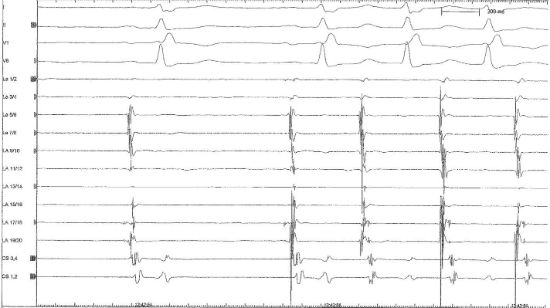
Fig. 2: Lasso RUPV
Show Answer
Correct answer:
Diagnosis: Focal atrial tachycardia originating in the right upper pulmonary vein.
-
3. Describe the next steps in treatment
Show Answer
Correct answer:
Treatment: Under continuous phrenic nerve monitoring, right upper pulmonary vein isolation was completed with two freezes using a 28mm balloon. The incessant focal activity came to a complete stop during the 1st freeze. The surface ECG demonstrated a regular rhythm (Fig. 3). Because of the possibility of crosstalk between the ipsiseptal veins, the right lower pulmonary vein was also isolated with two freezes.
Now, six months after the intervention, the patient remains free from arrhythmias.
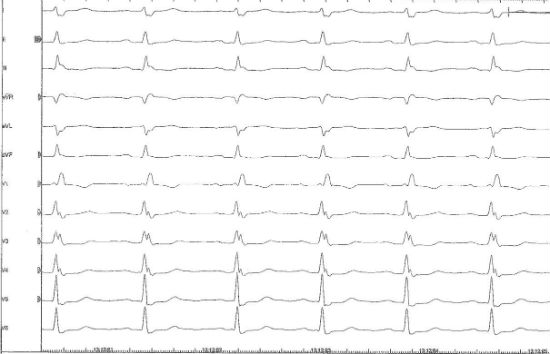
Fig. 3: ECG after first Freeze of RUPV
